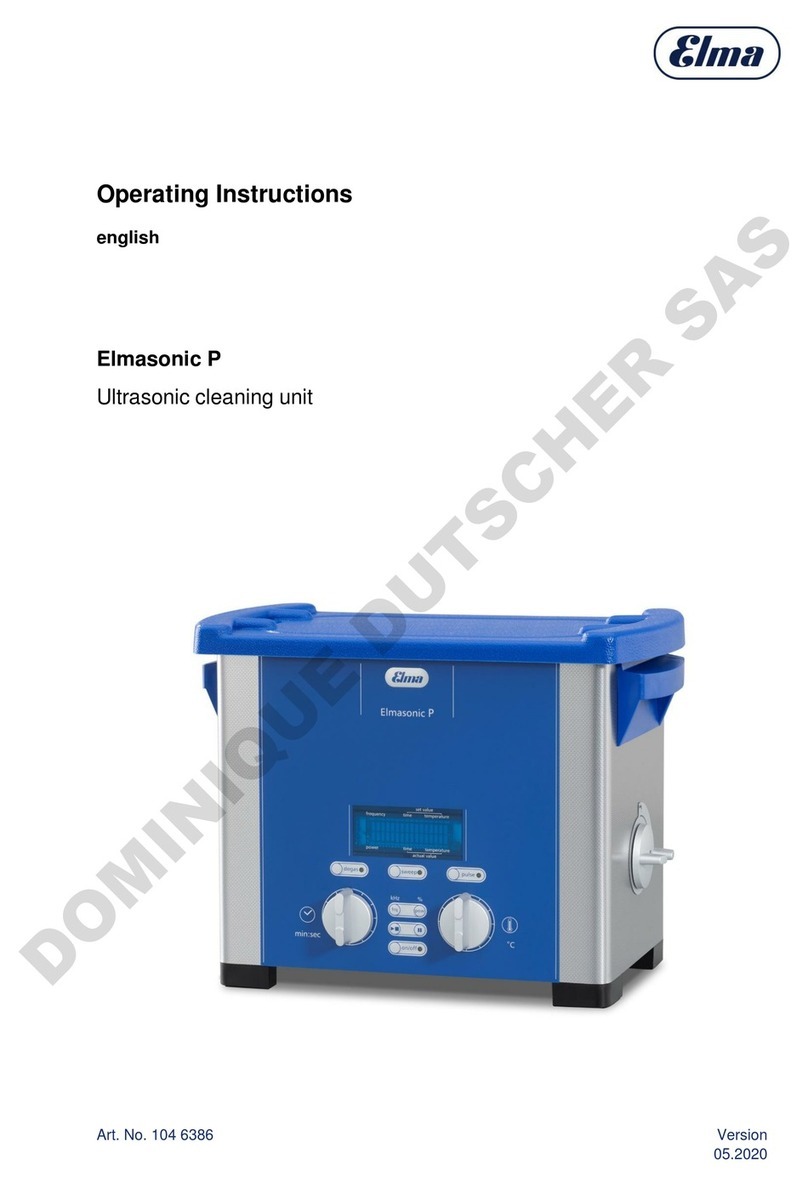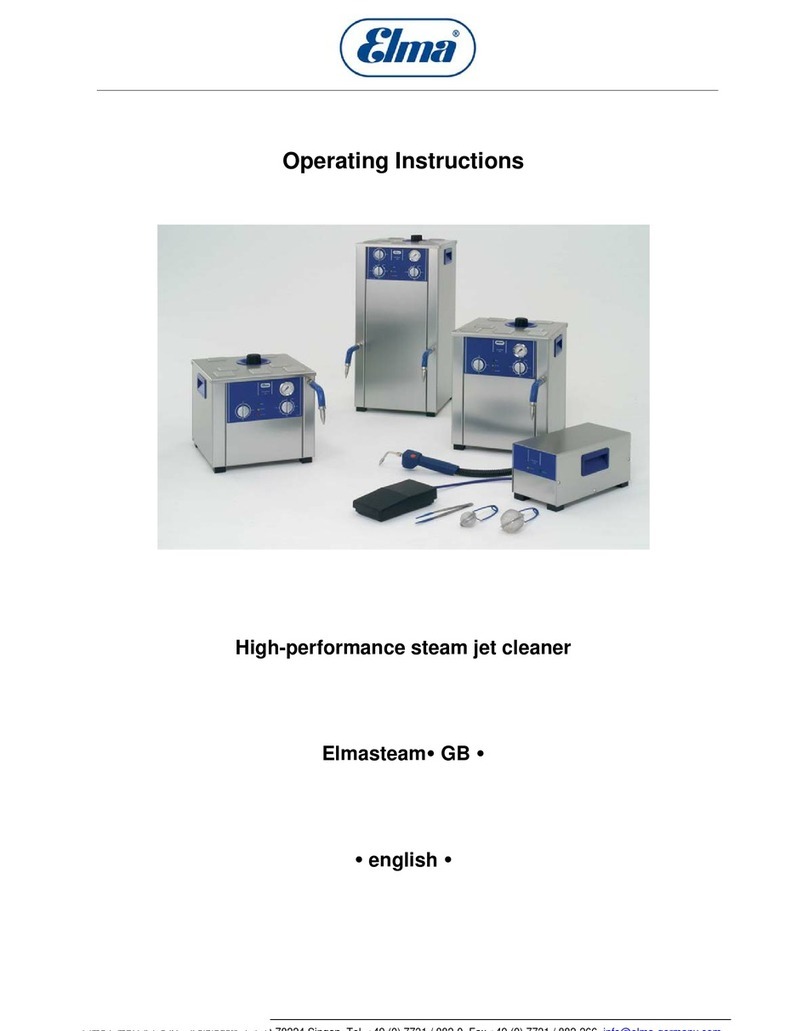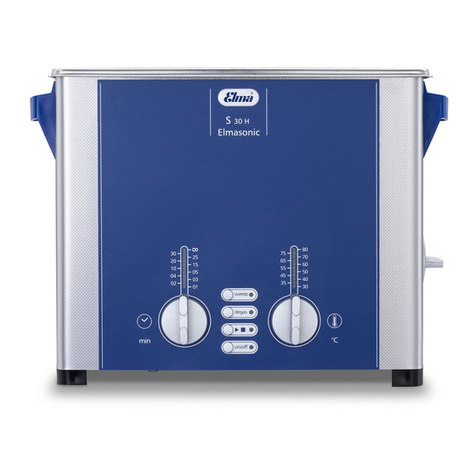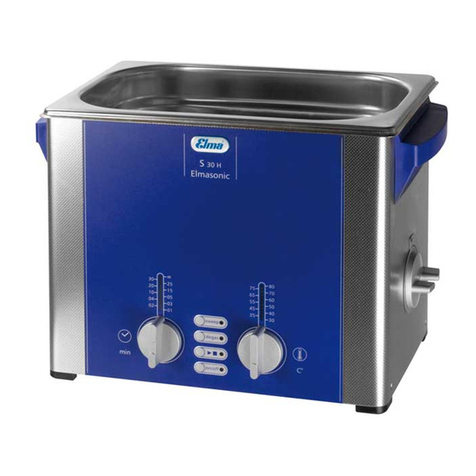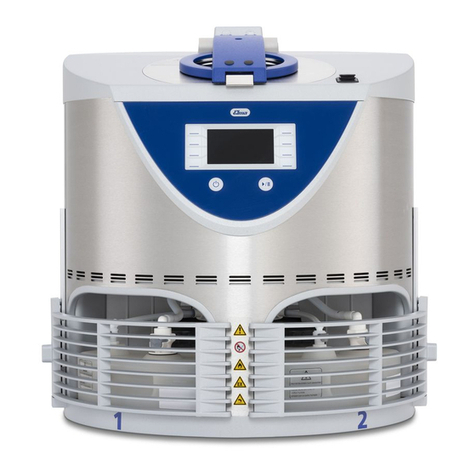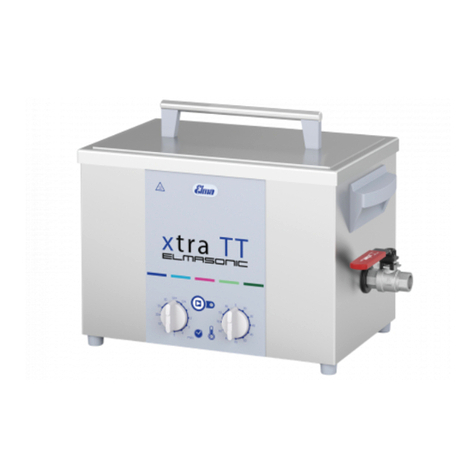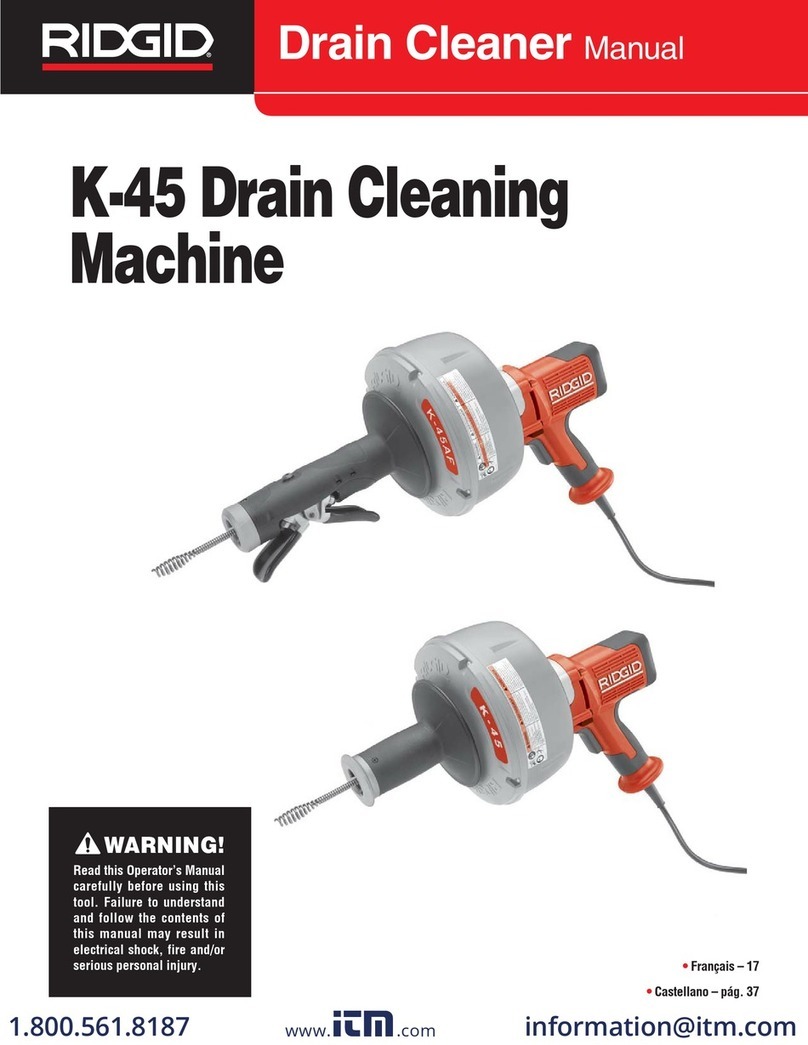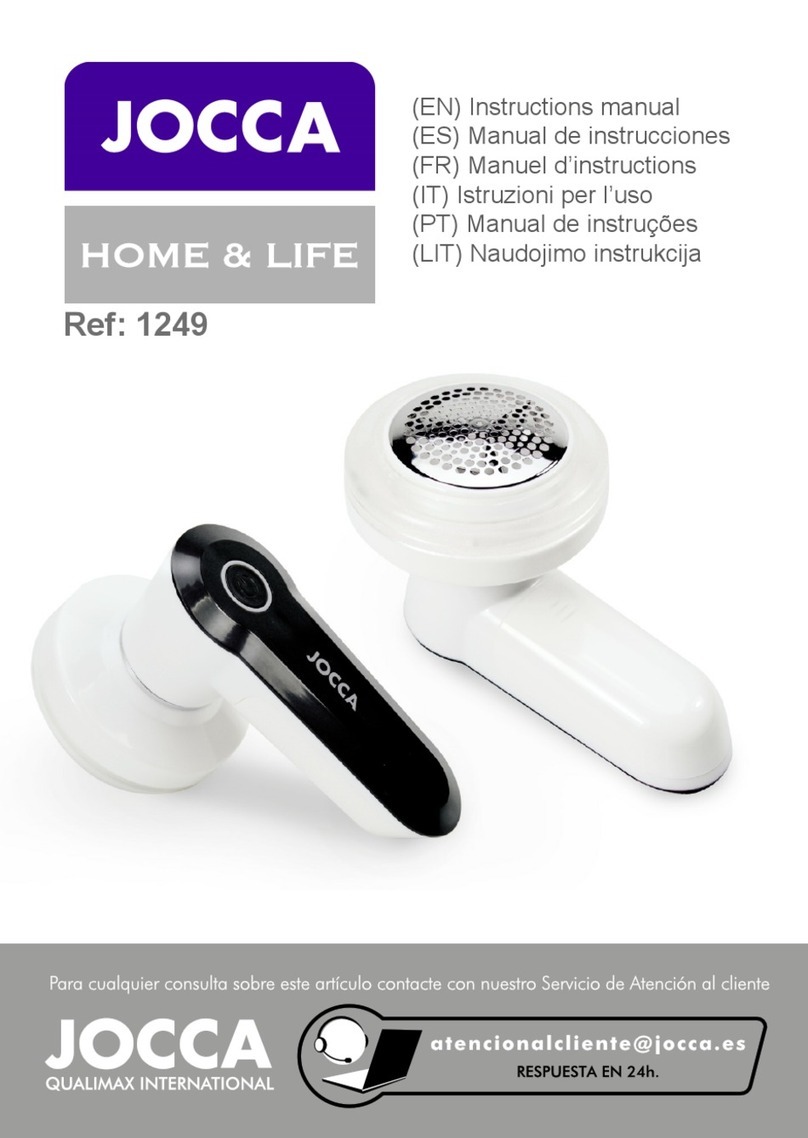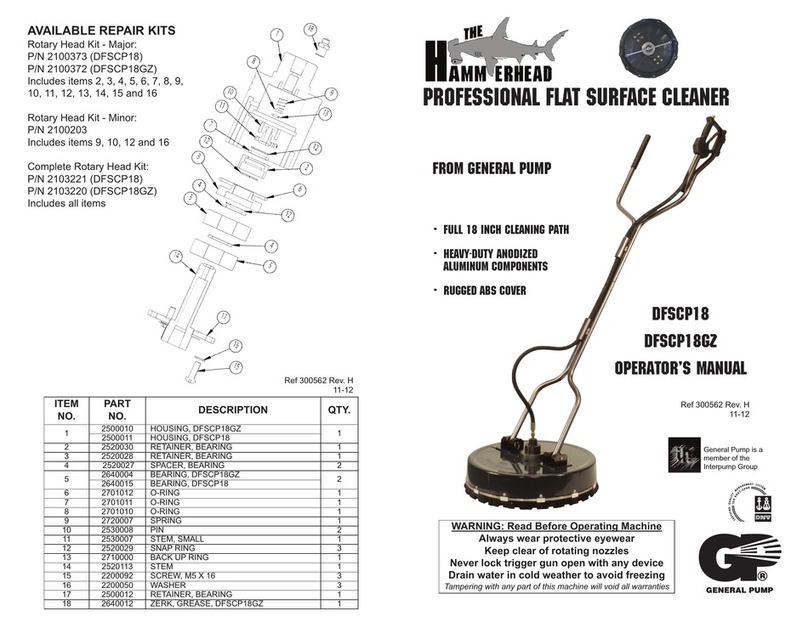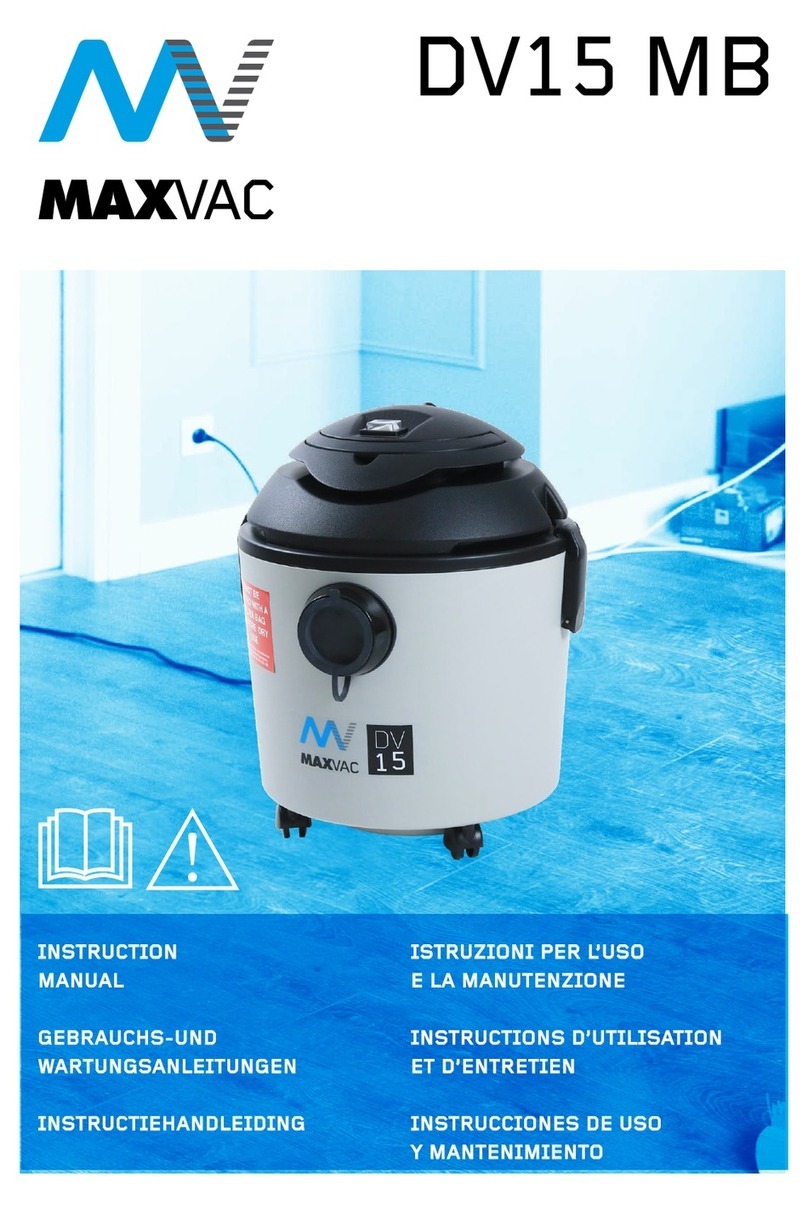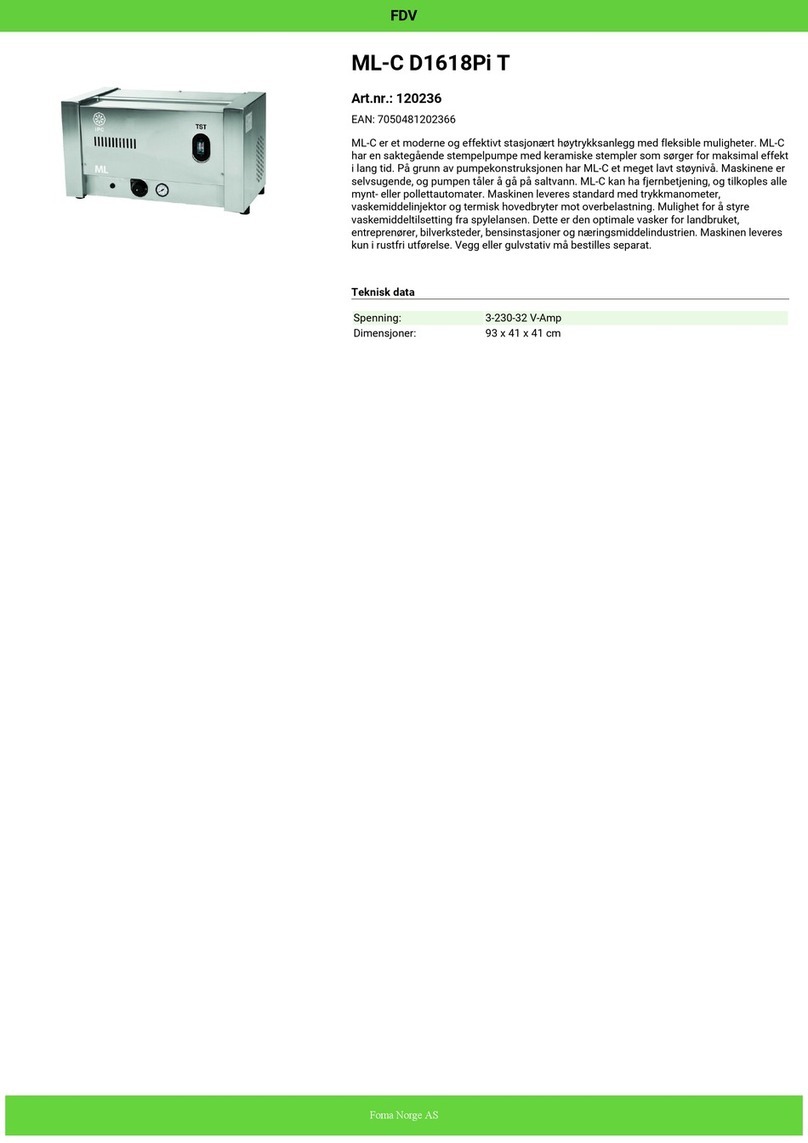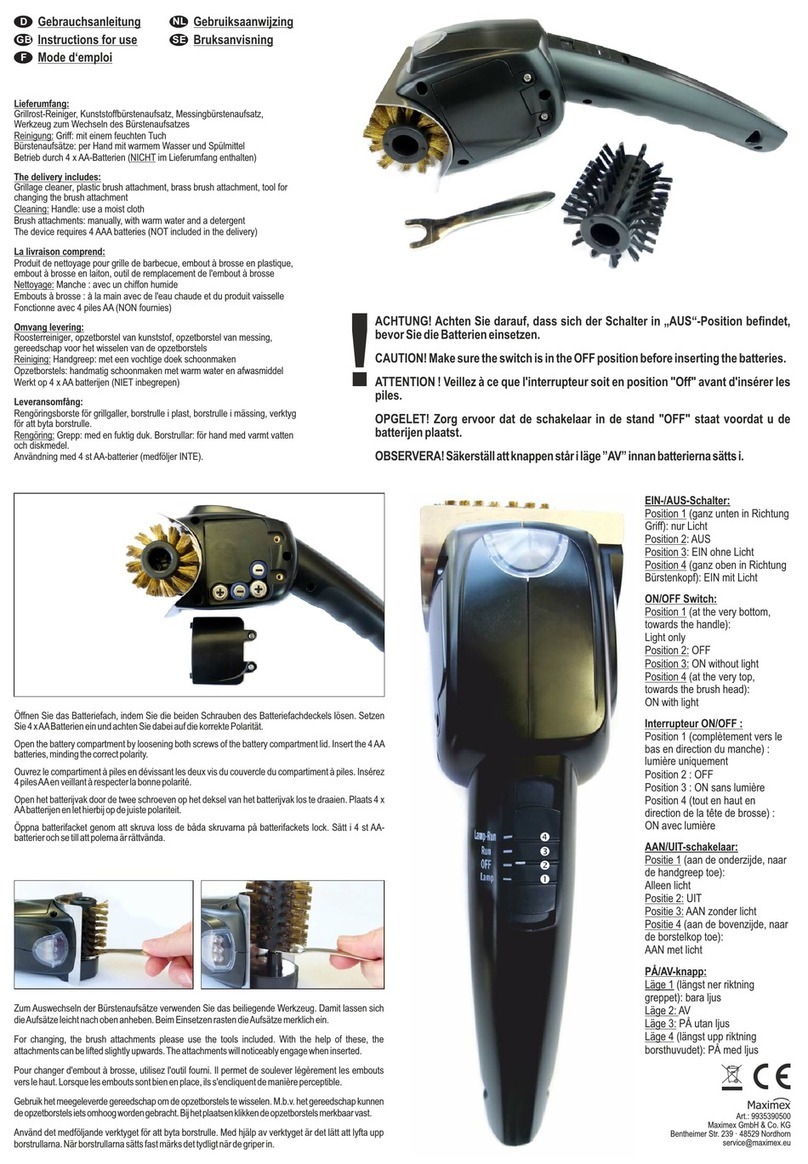
Only the ultrasonic devices which are specially marked with the symbols Al, All or
Alll have been approved in accordance with VbF for correspondingly inflammable
solvents of the same or a less dangerous risk groups.
Limited volumes of inflammable liquids, as defined in the general industrial safety
regulations, can be acoustically irradiated with the assistance of the ultrasonic
device under following conditions: If they are placed by sufficient external
ventilation in an appropriate separate container (example beaker glass). This can
get immersed into the stainless steel tank, which has been filled with non-
inflammable liquid (water with a few droplets of interlacing agent).
Warning in respect of aqueous cleaning agents:
Do not use aqueous cleaning mediums directly in the ultrasonic vat which are in
the acidity range (pH value lower than 7), to which fluoride (F-), chloride (Cl-) or
bromide
(Br-) ions will be introduced with the contamination of the parts or with the cleaning
agent. These will destroy the stainless steel tank during ultrasonic operation in a
very short time as a result of pitting corrosion.
Other agents which have a corrosive effect when used in high concentrations
and/or at high temperatures during ultrasonic operation are, e.g. nitric acid,
sulphuric acid, formic acid, hydrofluoric acid (even when diluted), potassium
hydroxide solution (leads to stress corrosion cracking in the ultrasonic tank). This
list is not necessarily conclusive.
The restrictions on the use of the ultrasonic tank listed above also apply when the
chemical compounds cited above are introduced to the tank which is filled with an
aqueous medium (in particular also for distilled water) as contamination or in the
form of carry-over.
In addition, this restriction also applies to customary cleaning agents and
disinfectants, should they contain the compounds mentioned above.
Be certain to also heed the safety precautions provided by the manufacturer of the
chemicals (e.g. glasses, gloves, caution and safety tips).
We, therefore, recommend that you use the cleaning agent specially adapted for
use in the ultrasonic bath developed and manufactured by ELMA. (Page 9,
Cleaning Agents. Areas of Use)
Maintenance and repairs
Any repair, maintenance or alignment works on the connected and opened
unit must be carried out by authorised personnel only.
Pull the mains plug before opening the unit for any repair and alignment works.
Any faulty parts must be replaced by original spares only in order to keep in
compliance with the strict safety regulations.
Please consult the manufacturer regarding any damage claims.
4


